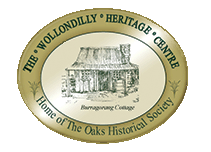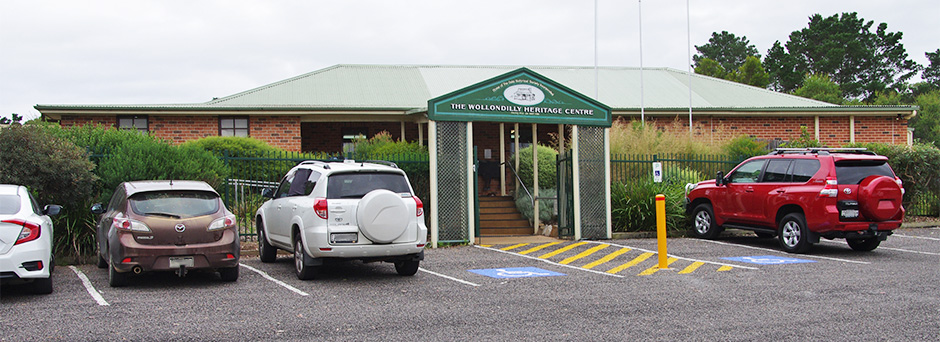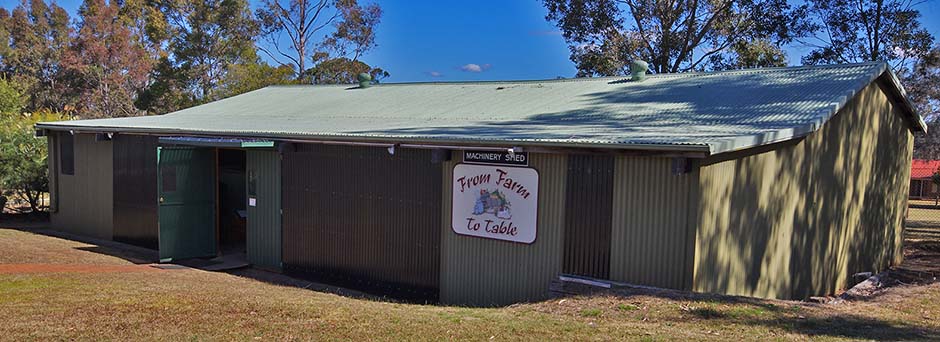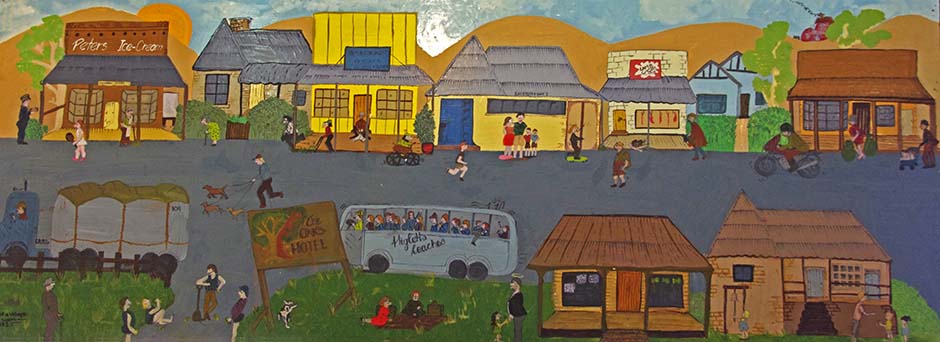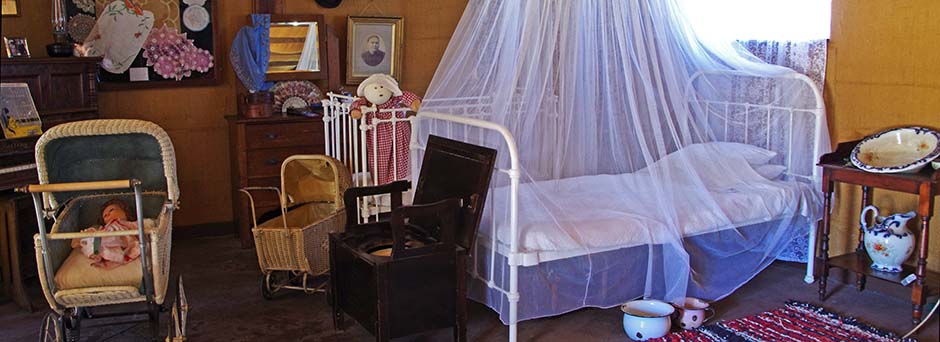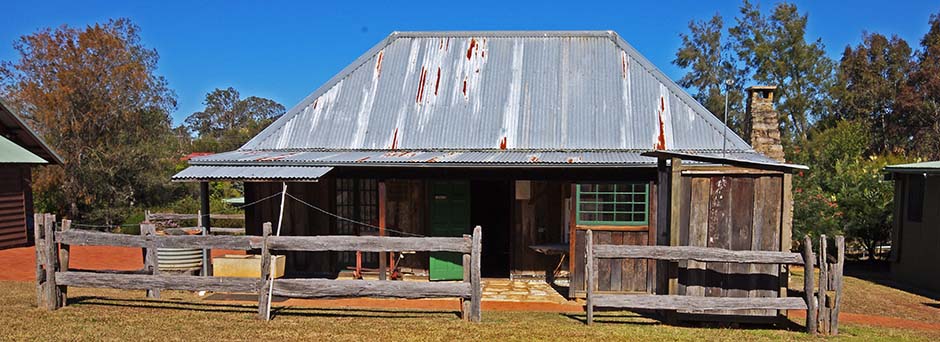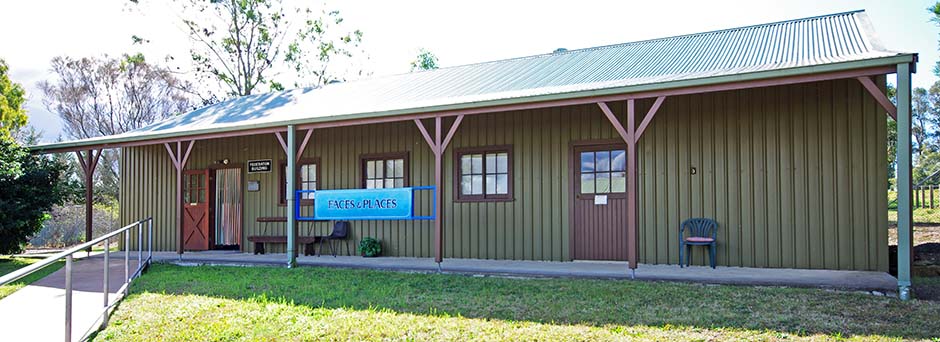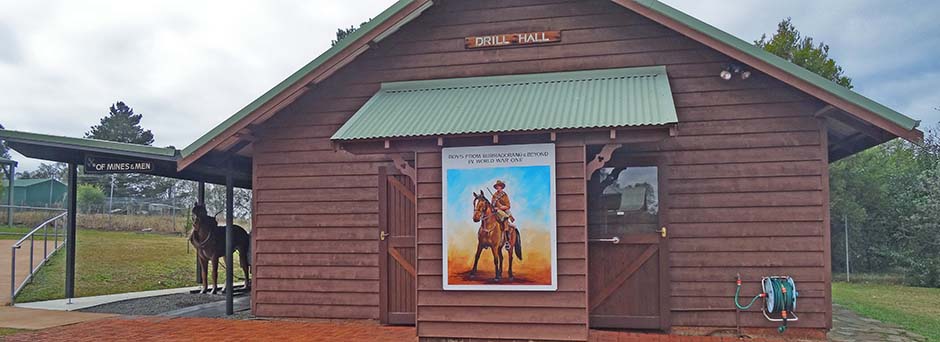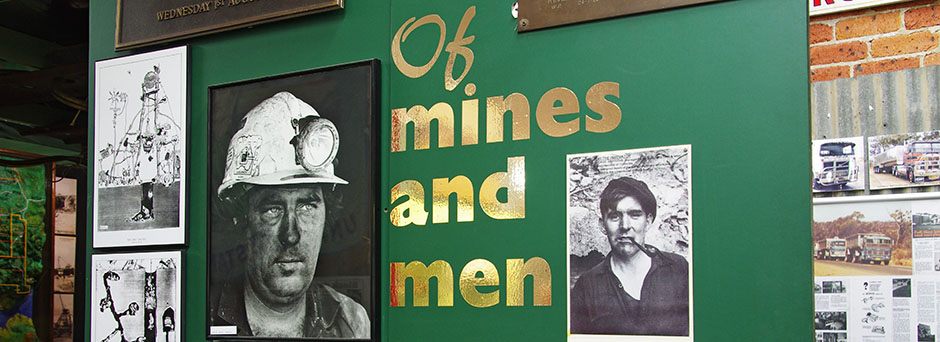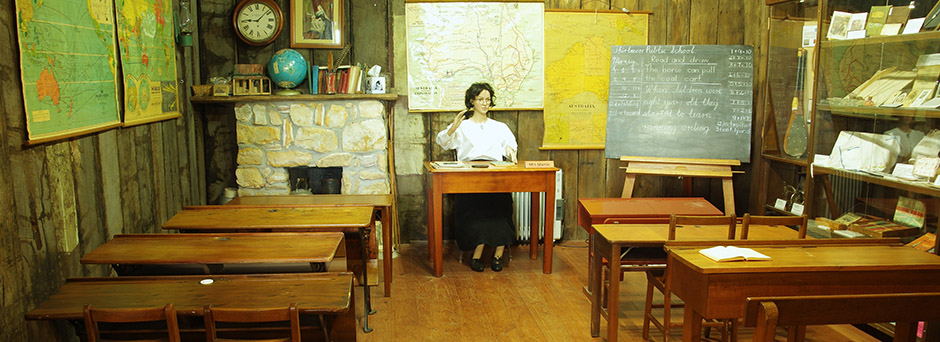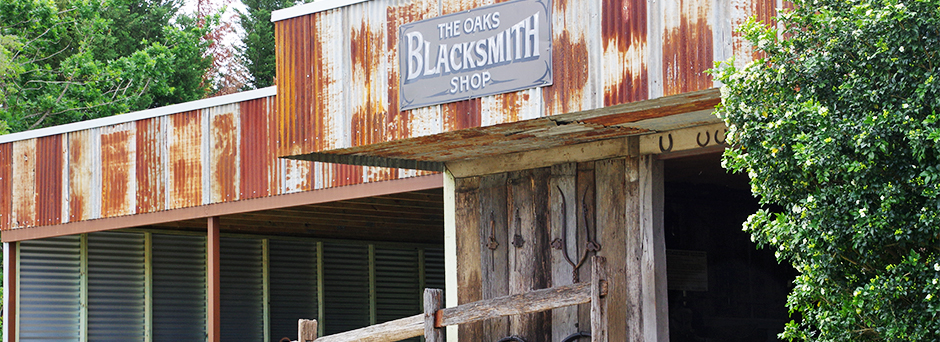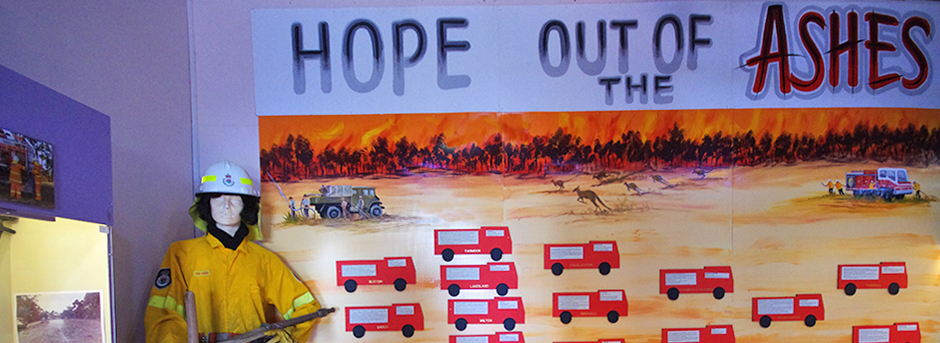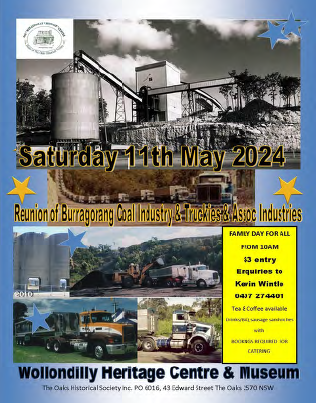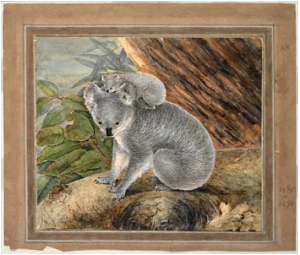WHAT HAPPENED TO OUR KOALAS?
The NPWS are considering creating a Koala Park to preserve what is left of our koalas. Local councils are monitoring their locations to monitor their movements and try to preserve them. But how much do we know about the presence of koalas in Wollondilly?
This is some documented material I have recently discovered from the archives of the Wollondilly Heritage Centre and online.
1798: The first mention of the koala was by John Price, Manuscript journal. Mention only of an animal seen near Bargo / Mittagong, south-west of Sydney.
1802: Colo or monkey. Ensign Francis Barrallier, 9 November. Manuscript journal. Mention only of parts of a dead animal seen and collected south-west of Sydney, in the area of the Nepean River, Michael Organ BSc DipArchAdmin Archivist, University of Wollongong
1803; “A new and remarkable species of Didelphis has been lately brought in from the southward of Botany Bay. It is called by the natives cooloo or coola, and most nearly approaches to the wombat, from which it differs in the number of its teeth and in several other circumstances. The Governor, I learn, sends a drawing made by Mr. Lewin. Mr. Bauer cannot on so short a notice finish the more accurate one he has taken. The necessity of sending my description, which is very imperfect, as the animal will not submit to be closely inspected, and I have had no opportunity of dissecting one, is in a great measure superseded by Mr. Truman having purchas’d a pair, which from their present healthy appearance, will probably reach England alive, or if not, will be preserv’d for anatomical” letter written during September 1803 by Robert Brown to Sir Joseph Banks, [Michael Organ BSc DipArchAdmin Archivist, University of Wollongong ][i]1836: On the animals called “monkeys” in New South Wales by William Romain Govatt in, The Saturday Magazine, London, 9(288), 31 December 1836. Detailed description plus engraved sketch of a Koala on a tree. [Koala ].
1861: ‘Bush Wanderings of a Naturalist ‘ by Horatio William Wheelwright, professional hunter in Victoria and – advocated Australia Felix as a fine place for shooting small game but at the same time cautions that indiscriminate hunting will soon exterminate most of the birds an small animals. Describes koalas as poor game to shoot but make reasonable eating, popular with Aboriginals
1883-1893: Sidney Bellingham describes hunting in the Blue Mountains in his book ‘Ten years with the Palette, Shot Gun & Rifle on the Blue Mountains’,[ii] in which he gives detailed advice on location and availability of local game including Koalas which he describes as ‘poor sport’ but that the fur ‘makes a good rug’ he also states that ‘native bears are dying out very fast in some districts. I have seen them lying about the bush day after day in some places’
1886: GOULBURN HERALD, AUG 28 1886, ESSAYS, SKETCHES, on. HUNTING THE KOALA.
…Another surprising fact concerning these bears is their apparent insensibility to pain. The Australian bear is not a savage animal nor very dangerous, and I rightly believe that these brown bears have less feeling-at all than any other animal with which I am acquainted…they wince not when wounded with B or BB shot, neither do their eyes express any sign of the body being hurt…. Altogether I have collected some sixty or seventy bear skins, and have learned the fleshers’ art of skinning and pegging out-an accomplishment which, I fear, begins and ends with my present experience. Yet as half’ a bullock is better than no beef, so killing koalas is better than getting no game at all.
1887-1889: The Katoomba Shooting Excursion & Fishing Club established at Katoomba College with Sid Bellingham as head Ranger who also became the taxidermist for the Museum of Natural History in Katoomba
1891: £50,000 paid for skins of 871 emus, over one million marsupials, 65,000 hares and rabbits, 11,350 dingoes, 3502 eaglehawks, and some other marsupials” Frederick Afalo in ‘A Sketch of the Natural History of Australia’ 1893: Visit by Franz Ferdinand to Australia in May 16. The heir to the throne of Austria-Hungary had shot his way across India, Ceylon and Java before turning the attention of his guns on New South Wales.The next day a special train was commissioned, serving both as transport and accommodation. When the curtains were parted on the royal carriage on the morning of May 18, the archduke awoke to find himself in Narromine, 40km west of Dubbo. There he was entrusted to the care and hunting instincts of local squatter Frank Mack. The fun began in Mack’s carriage on the way to the farm, when the archduke spotted, and promptly dispatched, three colourful birds. Then, and with the help of greyhounds the train had collected in Bathurst, the archduke sighted his first marsupial quarry – kangaroos …local farmers on horseback kindly drove ever more kangaroos towards the archduke. Their efforts were richly rewarded when, after quite a chase, an emu was added to the royal collection. The next day the train took the southern line, allowing its passengers to inspect the abattoir and meat-canning factory at Auburn before the journey continued to Moss Vale. The archduke’s host there, a certain Mr Badgery, soon cottoned on to the Austrian’s fondness for Australian fauna. Having collected his guest from the station, Badgery thoughtfully halted the carriage under some trees and gestured to a round shape huddled in one of the branches. What transpired was recorded in the archduke’s diary in the following words:
“Without being clear about what kind of animal it was, I fired a decent load of shot at it. Although I had obviously hit the target pretty well, because a lot of fur flew from its thick, grey coat, the shot produced little effect. The animal simply clung more tightly to the branch and did not appear to be finished off until the third shot, without having stirred itself noticeably. We were just about to send someone up the tree when suddenly the animal fell onto the road, and I was now able to identify it as the so-called Australian Bear (Phascolarctus cinereus). It belonged to the family of marsupials, and in its exterior appearance is reminiscent of a small bear The animal I killed was carrying a young one, which fell out of the pouch during the fall from the tree.
“One distinctive feature of the Australian Bear is its sluggishness and apathy; its only talent is climbing, but even this it does with astonishing slowness. Some time later we tried to coax a bear hanging quite low on a tree into fleeing or at least climbing quickly by yelling and making noise, but for a long time it took no notice at all of us, until finally turning its head away casually, climbing upward a few centimetres and then remaining restfully on the branch, until eventually I shot him down.
Franz Ferdinand managed to shoot another seven koalas on the ride to Badgery Station, whereby on each occasion, as he put it, he was“astonished again and again at the passivity of this animal when shot. Naturally one hits it with the first shot, but often one needed a whole series of shots before the dead bear fell down from the tree to which it had clung with its forearms and claws.”[iii]
Twenty years after his trip around the world, he was still doing the things heirs do when they’re waiting for their mother or father or uncle to die. Shooting and touring. That took him on a goodwill visit to the Bosnian capital of Sarajevo on June 28, 1914.
Seven Serbian suicide terrorists were waiting. But only a single bomb was thrown at the archduke’s motorcade, injuring one military aide. After an uneasy reception at the town hall, Franz Ferdinand decided to visit the injured man in hospital.
What followed was the most crucial accident in modern European history. No one had briefed the chauffeurs. After taking a wrong turn into the old city, they were ordered to stop. Standing by chance on the narrow footpath beside the open car was one of the terrorists who had lost his nerve earlier that morning. Gavril Princip leant forward and shot the royal couple with a Browning pistol.
A month later the world was at war. On memorials in Narromine and Moss Vale are recorded those districts’ contribution to the 15 million slaughtered in the bloodiest and most pointless conflict in history. [iv][v]
1896: Frederick Afalo in ‘A Sketch of the natural History of Australia’ [vi]recognises the cruelty of killing wildlife for sport and says of the koala ‘ so deliberately indeed does it move, that ‘bear shooting’ cannot be said to rank high among colonial sports. The piteous cry of a wounded koala is enough to make one foreswear shooting forever’ [vii]
1917: Raymond Small (BORN 1917) ORANGEVILLE, stated in From Timberland to smiling fields by Nell Weir “one time koalas and possums were very common and found in almost every tree’ [viii]
LES SEABRIGHT; King of Burragorang & Friends, 1987[Wollondilly Heritage Centre archives]
Our little koala bear was clubbed to death nearly 80 years ago …it is unbelievable that a society could be so blinded by monetary greed to permit such an outrage against a small unique animal with no food value at all to be slaughtered for its skin. Government interest in the licence fees and pelt tax is clearly shown as follows in 1908 – 57,9333 pelts passed through Sydney, by 1924 the incredible total of 2 million skins were exported….
Portland Guardian 14 October 1940.
THE KOALA (Contributed by Wm. J. Clark, (Inspector of Fisheries and Game; South Australia.) Formerly abounding in millions, and ranging throughout Queensland, New South Wales, Victoria and S. Australia, the world’s most attractive little fur-bear-the koala- has come within coo-co of extinction, but happily at last we are giving it the protection due well over half a century ago. To-day New South Wales has but.a handful of koalas in a wild state; Queensland has a few, South Australia practically none except in sanctuaries;. Victoria has about 1,000. The decline has been caused by disease in epidemic form, the fur hunters, bush fires, and the so-called sportsman. Queensland, where once thousands of koalas lived, was, during the-open season of 1927, considerably depleted, for more than half a million were killed. Thousands of these wonderful little creatures were killed by the pelt hunters every year. About ten years ago koala skins were still reaching London at the rate of 10,000 to 30,000 a year, and their value ranged from 5d. to 1/- apiece, They were used only in the making of articles for which cheap and durable fur was required. It will doubtless interest readers to know that in 1880 no less than 300,000 koala skins reached England…
In recent time: – I have seen them in the Hilltop / Colo Vale area and have been told of 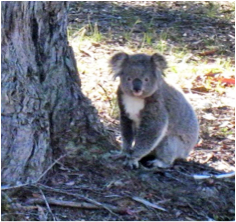 sightings on Wombeyan Caves . Reports of them in the Kowmung and along the Stock Route (Big Plain). I have often sighted Koalas around Nepean (see attached photos), Avon and Cordeaux Dams and generally in the Metropolitan catchments.One was reported and photographed (by SCA security guard) at Cordeaux Dam and another one that was injured along the Avon Dam Road was rescued by WIRES the week before. Per comment by Denis Ashton
sightings on Wombeyan Caves . Reports of them in the Kowmung and along the Stock Route (Big Plain). I have often sighted Koalas around Nepean (see attached photos), Avon and Cordeaux Dams and generally in the Metropolitan catchments.One was reported and photographed (by SCA security guard) at Cordeaux Dam and another one that was injured along the Avon Dam Road was rescued by WIRES the week before. Per comment by Denis Ashton
These notes are useful for tracing some of the reasons why Koalas are seldom seen in Wollondilly, but the story has wider implications and deserves more research.
Doreen Lyon
[i] Michael Organ BSc DipArchAdmin Archivist, University of Wollongong
[ii] Now reproduced with extra notes and material by Jim Smith and available from The Wollondilly Heritage Centre & Museum, The Oaks 2570 46571796 OR www.wollondillymuseum.org.au
[iii] http://www.franzferdinandsworldtour.com
[iv] http://www.smh.com.au/national/blazing-away-the-guns-of-narromine-20090424-ai1k.html
[vi] A Sketch of the natural History of Australia’Frederick Afalo
[vii] Quoted in ‘Ten Years with Palette, Shot gun & Rifle on the Blue Mountains of NSW” by Sidney Bellingham
[viii] From the archives of the Wollondilly Heritage Centre & Museum, The Oaks

